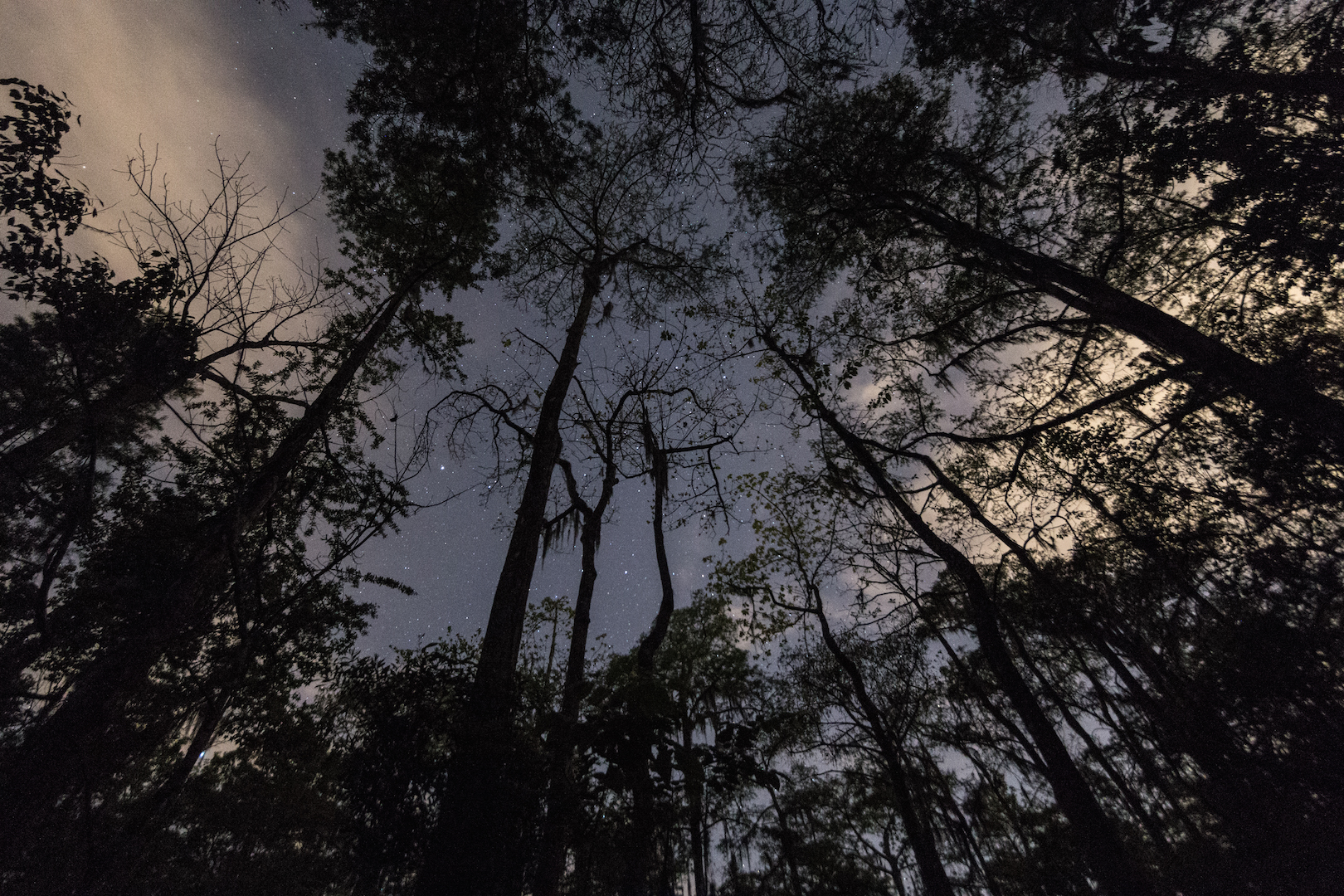In late March of 2019 my brother and I went on a road trip I had been planning for quite some time. It was a trip on the trail of some of the most famous "monsters" in the American south and one heck of a journey. Here’s a little background on the monsters and a recap of what we got ourselves into…
The journey started in Fouke, Arkansas, home of the “Fouke Monster.” Fouke is a very small town nestled in the bottomlands of southwestern Arkansas on the border of Texas, just north of Louisiana. There isn’t really much of anything in Fouke and the closest city of 37,000 people (Texarkana, Texas) is about 25 minutes northwest. Despite all of that, thousands of people from across the world venture each year to Fouke in search of its famous monster.
For over a century people in this part of Arkansas have told stories of a hairy man-like creature roaming the deep woods and waterways around Fouke. Formerly known as the “Jonesville Monster,” this creature was immortalized in the 1972 cult classic film The Legend of Boggy Creek by Charles B. Pierce. However this film did far more than just put Fouke and it’s monster on a map. This film was actually one of the first “documentary-drama” type films that would go on to later influence iconic films such as The Blair Witch Project, the found footage genre and directors like Quentin Tarantino and others. Ralph McQuarrie, who created the original poster art for The Legend of Boggy Creek, would later be hired by George Lucas to create some of the conceptual art for the original Star Wars films, influencing the way characters like Darth Vader and others look.
As a filmmaker, it’s amazing to me how this modestly budgeted film cemented its place in sci-fi history, unknowingly. The film would also be one that brought Bigfoot like monsters into the mainstream pop-culture landscape. Additionally it influenced countless people today interested in the Bigfoot subculture. There are many reasons why people are interested in the subject of Bigfoot, Sasquatch & mystery hominids, but more often than not when I ask people what got them into it, it’s usually either having seen the Patterson-Gimlin film or The Legend of Boggy Creek, or a combination of the two. The film went down in history and there were several remakes. In recent years, Pierce’s daughter Pamula, has taken it upon herself to completely re-release the film in 2019, re-mastered in 4K with premieres, DVD and Blu-ray releases planned. The perfect timing it seemed for a visit to Fouke with all the momentum buzzing.
For me Fouke was one of the places on my “Cryptozoological bucket list." It’s a place I’d wanted to visit since I was a kid hearing about the Fouke Monster and watching the film and getting totally creeped out. Having already crossed off Loch Ness and Willow Creek/Bluff Creek, California, Fouke was up next. Upon arriving to Fouke after the three-hour drive from Dallas, Texas, we met up with Lyle Blackburn.
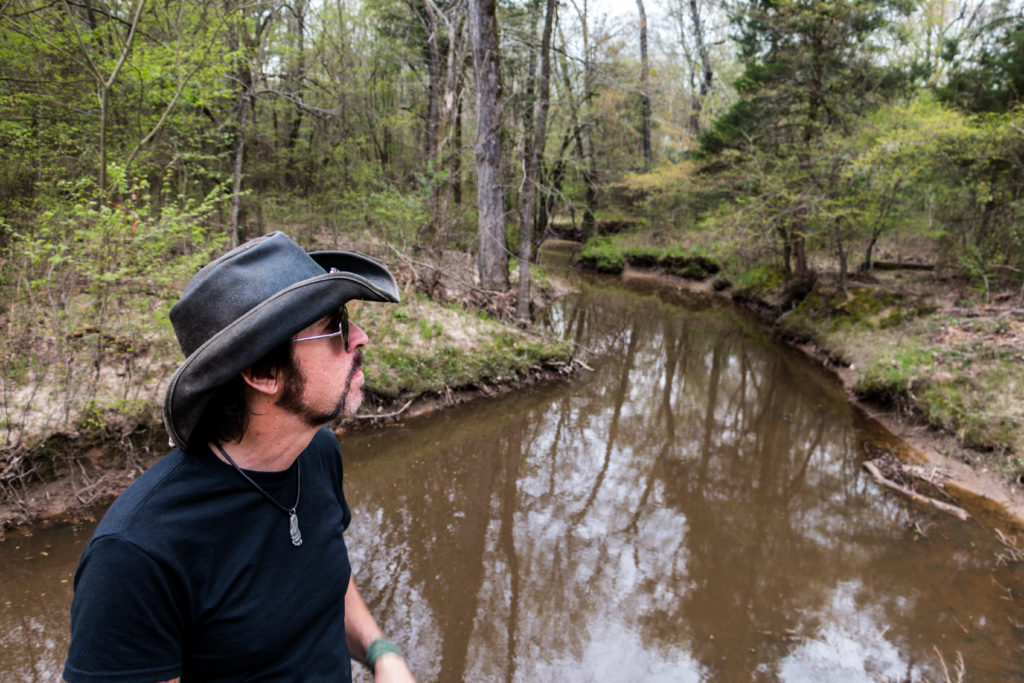
A Texas native, sporting tattoos and a cool black cowboy hat, we found Lyle hanging out, relaxing on the bench in front of the Monster Mart in Fouke. In a lot of ways Lyle has become “Mr. Boggy Creek” in recent years, for good reason. For the past decade or so Lyle has documented stories of the Fouke Monster for his books, various film and television appearances, including for Seth Breedlove/Small Town Monsters 2016 documentary Boggy Creek Monster. Cryptozoology author and researcher extraordinaire, Lyle has gone well beyond Fouke in his literary works, writing books on the Southern Sasquatch more broadly, the Lizard man of Bishopville, South Carolina and Momo the Missouri Monster, to name a few.
Lyle was gracious enough to hang with us for a few hours and give us an introductory tour of the area and where some of the major sightings and events of the film took place. In our rental sedan, we braved the back roads of Fouke, checking out the Sulphur River, the location of Boggy Creek itself and spots such as where the Ford shack was “attacked” by the monster, as portrayed in the film. It was great getting such a look at Fouke from somebody who spent so much time getting acquainted with every back road and sighting location.
Once the sun went down, my brother and I spent a few hours driving around those very back roads and exploring spots near the Sulphur river, where there had been Fouke Monster sightings. We came across a small swampy pond called Mercer Lake that revealed what appeared to be the corpse of a raccoon floating in the water, the skeletal remains of a headless coyote right nearby and the ominous eye shine of alligators in the water. Thoroughly creeped out, after a few hours we decided to call it a night and head back to the hotel in Texarkana.
The next day we gathered some necessary supplies for hiking that we had forgotten, including bug spray, mosquito nets and a spare battery and charger for my Canon 70D (I forgot mine at home). With that said we went back the Mercer Lake area and walked around in the woods for a while. I don’t think I’ve ever seen that much poison ivy in one place. We saw the dried plaster remaining of a footprint casting that Lyle had taken a day earlier based on a tip from some locals. I also had a “ninja snake” jump out of a tree directly in front of me, landing right in the Sulphur River and swimming away. After a thorough tick check, we headed to the Monster Mart.
The Monster Mart is basically your one-stop-shop while in Fouke. It’s impossible to miss the giant faux Fouke Monster on the roof as well as the multiple monster murals and statues on the outside. On the inside the Monster Mart functions as part gas station and part Fouke Monster museum and souvenir shop. The side room is filled with old newspaper clippings, interesting artifacts and tons of other monster related items. The souvenir area has just about anything Fouke Monster and Bigfoot related you could possibly want. The display’s are very well done and it’s a must see destination in Fouke.
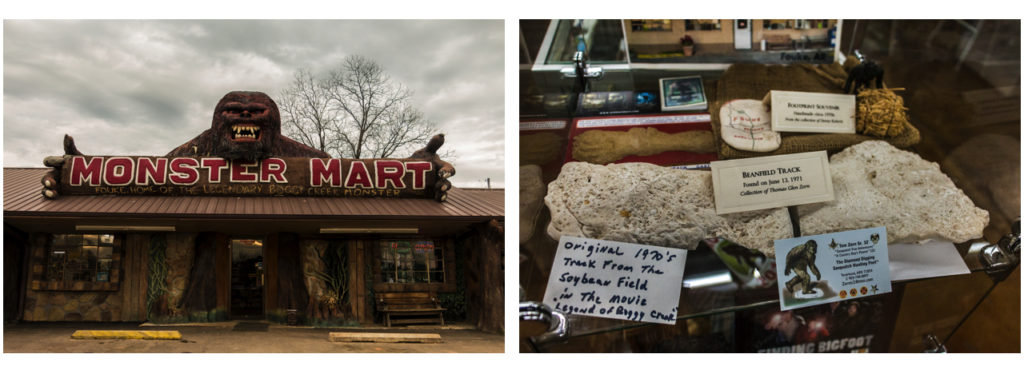
While at the Monster Mart I interviewed local brothers Rick and Denny Roberts. Denny and his wife own the Monster Mart and were deeply entrenched in the story of the Fouke Monster. I interviewed Denny about the Monster Mart itself and many of the stories of the years he had heard. I interviewed Rick about some of his direct experiences with the Fouke Monster, recent track finds, as well as sightings of panthers (including black ones) in the area. I must comment about how friendly the Roberts’ were, as were their employees and more broadly everybody we had met so far in Fouke. Fouke truly became one of my favorite small towns I’ve been to.
Shortly after we drove around to get some drone footage of Mercer Bayou, the woods and surrounding areas. This even included a short nap in the car right by the Sulphur River. That evening we arranged to meet up with Lee and Alicia DuCote and their son. Lee and Alicia had been filming with Lyle the day prior, working on a show of their own called Adventure & Romance, which is currently in production and slated for online streaming releases later this year.
The DuCotes had returned to Fouke to conduct a night investigation by the Sulphur River in one of the spots Lyle had shown them, so we joined forces and stomped around the woods for a few hours. Once light fell, we tried our hand out at doing some “Bigfoot” whoops and vocalizations. The only response we got was from a group of coyotes not too far off. Aside from that it was a creepy night spent in the woods around Fouke. With that our weekend in Fouke had come to an end, too shortly it seemed, but we were just glad to have spent a couple of days hanging around town.
The next day we departed for South Louisiana, headed for the heart of Cajun country. Along the six or so hour drive down we stopped by Caddo Lake in Northern Louisiana, situated on the border with Texas. It was nothing but a 15-minute excursion to just say we had been there. We were drawn there by tales of the “Caddo Critter”, another southern Sasquatch type monster seen stomping around Caddo Lake for decades.
Once in Louisiana, we stayed in Houma, which is in the heart of Bayou country and located deep in Cajun country or “Acadiana.” South Louisiana is definitely a very distinct area, unlike other parts of the south. Geographically it is comprised of bayous, swamps and various waterways. The Cajun culture of the region is a remnant of the strong French presence that once dominated Louisiana. Cajun’s descend mostly from French speaking “Acadians” that were expelled from the now Canadian province of Nova Scotia in the mid 1700’s by the British, settling in French controlled Louisiana.
In Cajun folklore there is a monster known as the “Rougarou.” The Rougarou is described as a fearsome wolf like monster, basically a swamp version of the classic human transforming into a werewolf story present in European folklore for centuries. Unlike monsters like the Fouke Monster or other southern monsters, it’s seen more through the lens of folklore, as opposed to a potentially real creature that is seen with some regularity. However in recent years there has been an uptick in what people describe as “Dogmen” and other wolf or canine like Cryptids being seen by eyewitnesses across North America. Stories like that of the Beast of Bray Road of Wisconsin, the Michigan Dogman and Shunka Warakin of Montana come to mind.
I wasn’t so much as seeking out witnesses or believers of the Rougarou while in Louisiana, but rather exploring its folkloric origins, which are quite fascinating. I’ve touched upon the Rougarou in a previous post about the Wendigo story in the French-speaking province of Quebec and it’s possible connection, but it goes further. In French speaking parts of the New World there were stories of the “Loup-garou”, which is where the Rougarou story originates. In some parts of the Louisiana both Rougarou and Loup-Garou are interchangeable.
Interestingly enough around the same time as the Acadian expulsions in North America, in France one of the most notable Werewolf stories ever was taking place. The Beast of Gévaudan (La Bête du Gévaudan) terrorized the Margeride Mountains in France for three years, with dozens of people killed and attacked by man-eating wolves that were believed to be shape-shifting werewolves. The case is significant in that it influenced the idea that werewolves needed to be slain with silver bullets, among other things.
In Louisiana however the Rougarou has become, like Bigfoot in many other areas, a celebrated local monster. There are Rougarou beers, hot sauces, souvenirs and even an annual “Rougarou Festival” held in Houma around Halloween. The Rougarou has been a subject of various television shows, films and other media. The only Rougarou we came across was a life-size model of one at the Audubon Zoo in New Orleans in their Louisiana swamp section, which was very well done.
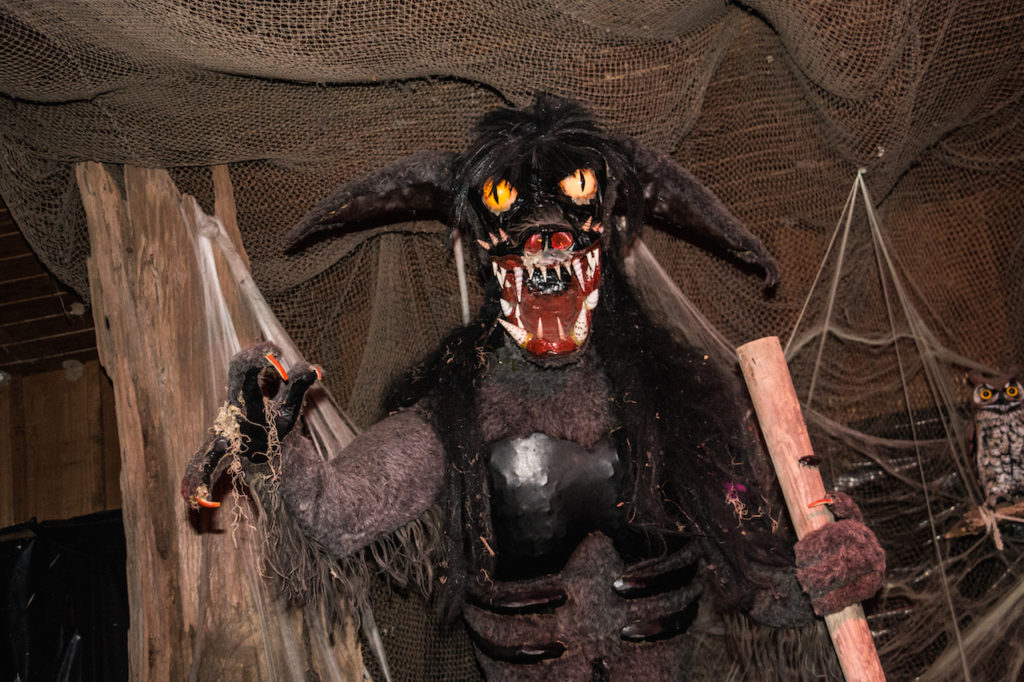
Some have tried to explain away contemporary sightings of the Rougarou, or even it’s origins, as sightings of Bigfoot like creatures in the swamps, but ultimately it is hard to say with such a deeply-rooted folkloric story. While around Houma we took a swamp tour, which included feeding alligators and seeing other wildlife. When I asked our Cajun guide Gaston, a lifelong fisherman and trapper on the bayou, what the strangest thing he had ever experienced out there he spoke of strange vocalizations he heard on two occasions. Gaston went on to describe how White Tailed deer adapted to walk in the swamps without making a sound. They slowly place their foot into the water and then splay their hooves in the mud for traction. Learning to mimic this silent form of walking, he snuck up on some deer some years and was interrupted by horrible howling sound that sent the deer fleeing. Having never anything like it, Gaston was quite frightened and has only heard a similar sound on another occasion while out on the bayou at night.
We hiked through the Mandalay National Wildlife Refuge outside of Houma, both in the daytime and early in the morning in order to watch the sun rise over the swamp. There is a very creepy feeling hiking through a swamp in the dark not only because of the prospect of alligators, hogs and venomous cottonmouths nearby, but also the stories of the various monsters lingering in the back of your head. Browsing online I did manage to find a few Bigfoot type sightings in the Houma area, one in particular where two witnesses saw a large hairy creature cross the road in front of them late at night on a country road.
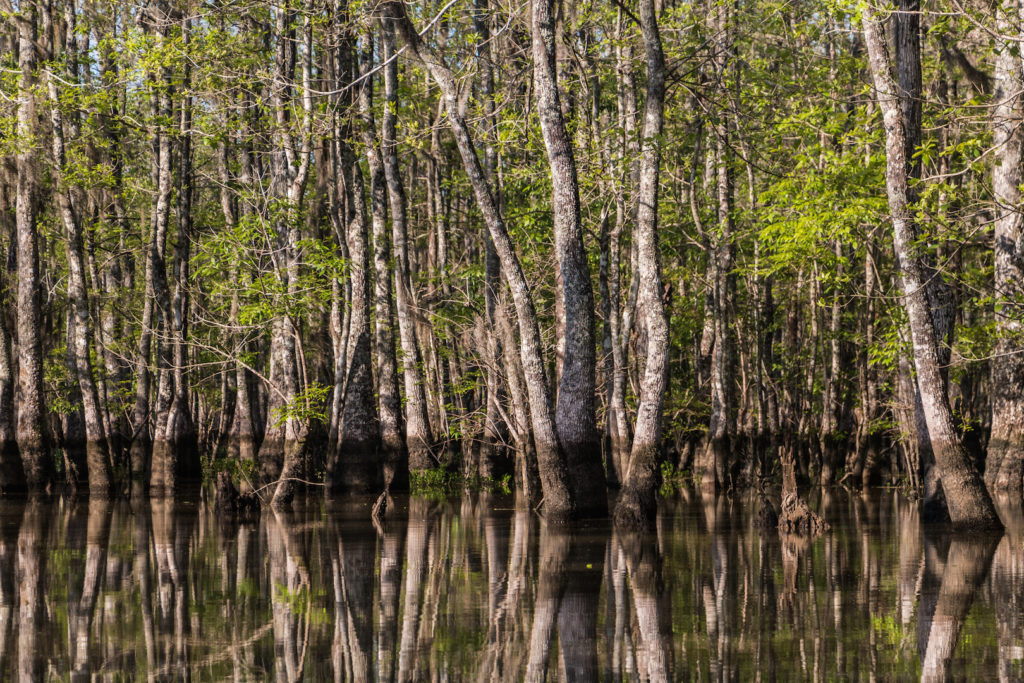
The last southern monster we looked into was the Honey Island Swamp Monster. This is one that I’ve heard of for years, coming from the scenic Honey Island Swamp just north of New Orleans, near the Louisiana border with Mississippi. The Honey Island Swamp derives its name from European Honeybees that were brought and lived in parts of the swamp centuries ago. The swamp is part of the Pearl River Wildlife Management area, connecting to thousands of acres of swampy marshland and Cypress forests all along the Mississippi border. Today it is home to a variety of swamp creatures one might expect like alligators, hogs, snapping turtles, bears, nutria and according to some the Honey Island Swamp Monster.
When most people think of a Swamp monster archetype it’s usually some sort of reptilian humanoid not unlike the Creature from the Black Lagoon or the classic comic book Swamp Thing, but in reality most of the “swamp monsters” described in the south are hair covered, man like creatures that fit the description of Sasquatch like creatures seen in other parts of the country. Creatures like that described in Fouke, swamp apes, skunk apes and even “boogers” or "wookies" in other parts of south are distinctly ape like. While there are reptilian type creatures that have been described in cases such as the Lizardman of Bishopville/Scape Ore Swamp, South Carolina, some have pointed to a Bigfoot type creature having it’s hair matted down or caked down by mud in the swamp conditions, giving the appearance of scales or reptilian skin.
The story of the Honey Island Swamp Monster is controversial and quite muddied (pun intended) as it’s unclear where exactly it originated. Also known as the “Tainted Keitre”, the story is connected to an early 20th century story of a circus train wreck (a motif frequently present in folkloric Bigfoot stories) near the swamp that released Chimpanzees into the swamp, leading them to interbreed with local alligators, creating the Honey Island Swamp Monster. An extremely bizarre detail that is biologically impossible, but so the story goes. I’ll come back to that aspect in a bit.
The monster is generally described as a large Bigfoot type creature with shaggy long hair, glowing red eyes and a foul odor, something present in other southern Bigfoot type stories (skunk apes) but more broadly pungent smell is something reported in Bigfoot encounters across North America, in less than 50% of encounters. I’ve personally heard many eyewitnesses refer to the smells as anything from rotting flesh or fish to a “monkey house zoo” smell, to wet dog or soggy newspapers. Gorillas can actually control their scent glands and release pungent body odor when agitated or upset, so some researchers have speculated this might account for the “Bigfoot stench” in some reports. One would imagine that living in a swamp would make an animal smell worse than your typical woodland environment.
While the train wreck origin story of the Honey Island Swamp Monster has been floating around for some time, one of the first reported sightings came from a local named Harlan Ford and a companion, who claimed to see the creature in 1963 while in a remote area of the Honey Island Swamp. Later in the 1970’s Ford would claim to discover a series of peculiar footprints while duck hunting and finding dead wild hogs in the vicinity. The prints were peculiar in that they were three toed, appeared to be webbed and almost like a mixture of an alligator and ape foot. After Ford’s death in the 1980’s, a reel of film was discovered of a strange Bigfoot like creature in the swamp that Ford had filmed.
There has been doubt cast upon Ford’s story, the footprints, as well as the film. Biologically speaking the footprints are certainly unusual and not at all like other supposed Bigfoot prints found across North America, which generally resemble a wider, enlarged five toed human like foot. It has been suggested the creature has adapted to living in a swamp environment, thus resulting in a webbed foot, or perhaps the result of the absurd apes breeding with the alligator’s theory. Like with other three-toed prints (such as those discovered in Fouke), inbreeding has also been suggested.
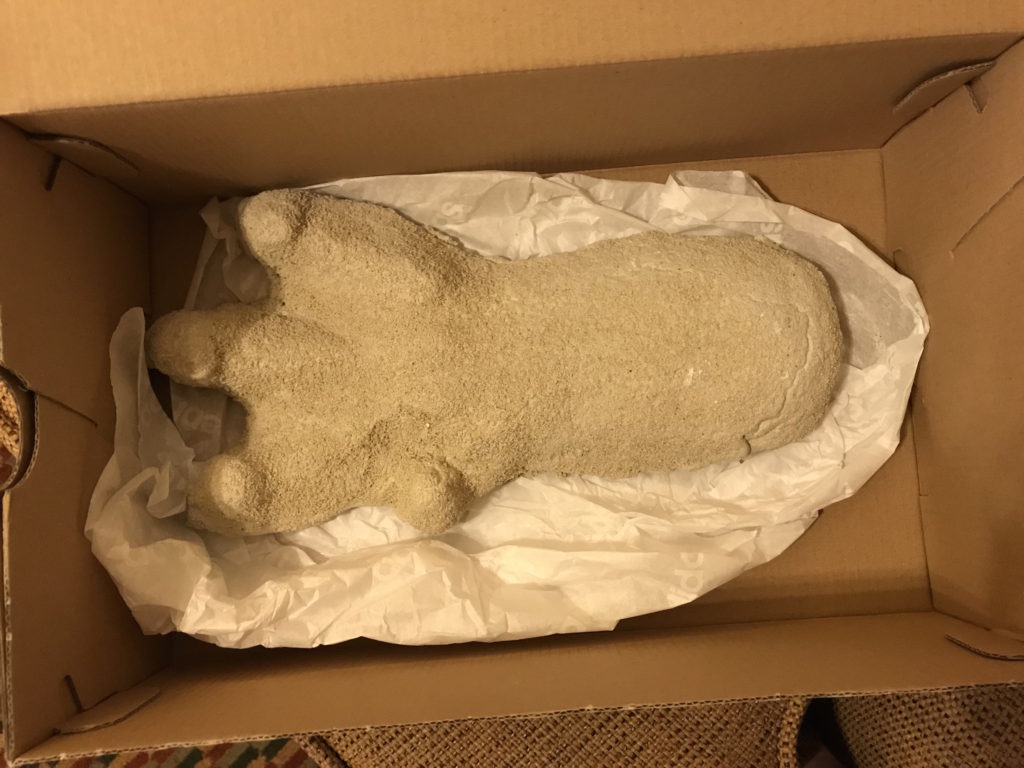
Hoaxing is always a possibility when examining Cryptid creatures, as there has been more than a fair share of them over the years. Regardless of Ford’s story, there have been other sightings since then and even taking place in modern times. Similar Bigfoot like creatures are spotted across Louisiana and right near the Honey Island Swamp itself in bordering Mississippi, so it was still worth looking into my eyes.
While we were only in Slidell, Louisiana and the Honey Island Swamp area for a day, we made the best of our time there. That started early in the morning with a two hour guided swamp tour. This was great because via boat you could get great access to areas deep within the swamp that would be otherwise impossible to reach. It’s also a great way to learn all about the ecology of the swamp and much of the history of the area. We ended up seeing various species of birds such as egrets, as well as water snakes and a bull alligator patrolling his area, recently having come out of brumation (reptile hibernation).
After the tour, we arranged to meet with Dana Holyfield, granddaughter of Harlan Ford. Dana has been featured in various television and documentary programs over the years regarding the Honey Island Swamp Monster, in addition to having created a documentary on the subject. Dana has stewarded her grandfather’s footprint casts, as well as gathered various encounters with the creature for a book she wrote about it. We interviewed Dana all about her grandfather’s story, the monster itself and the potential encounters she may have had while at a remote fishing camp deep in the swamp. All in all, it was quite interesting talking with Dana. Click here to see my full interview with Dana.
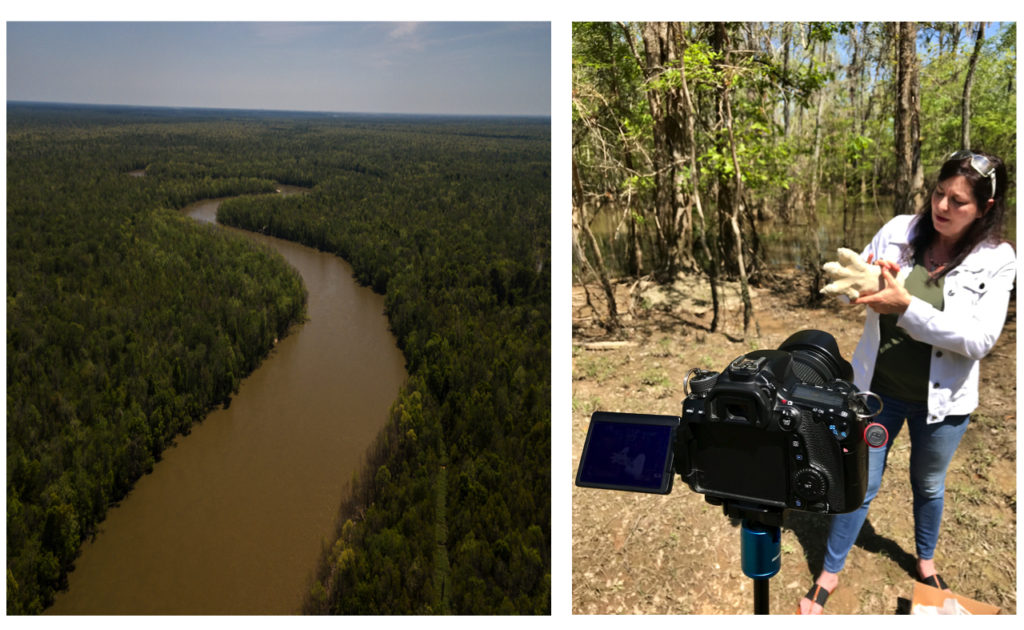
After doing some filming and scouting overhead with the drone, we decided to call it a day and headed back to New Orleans. Since we were spending our last day of the trip in New Orleans itself, we figured one last jaunt into the woods would be appropriate. So we decided to night hike through the Barataria Preserve, just south of New Orleans. The Preserve is a part of the Jean Lafitte National Park, named after famed French pirate Jean Lafitte, who operated out of Louisiana.
We had previously hiked through this area during the day on wooden boardwalks above the water and cypress knees. During the day we came face to face with dozens of snakes just below the boardwalk, some scurrying nutria and even a few sunbathing alligators. At night it was a totally different vibe. Being conscious of the critters present, as well as being the only people there, we made our way onto a platform with some benches, nestled in between the trees. We proceeded to just sit there and take it all in.
What was amazing was the silence. Aside from the occasional frogs, it was a lot quieter than you’d expect a marshy, swamp like environment to be. The fact that we were 25 minutes south of bustling downtown New Orleans attested to the solitude of the Barataria preserve at night. Stars were visible and the cypress trees, with hanging Spanish moss gave off an eerie, yet calm feeling. After a short back and forth with a nearby Barred Owl, we headed back. Right before getting back to our car, something scurried through the brush, causing a ruckus. Likely something the size of a Nutria, the mind still races and thinks what hideous creature of the night might be responsible for the disturbance.
Wherever I’ve traveled, I’ve always enjoyed seeing how towns and regions will celebrate their local folkloric monsters and Cryptids. With Cryptozoology and "Cryptid Tourism" seeing an increase in popularity in recent years, it’s towns like Fouke that not only capitalize (in a good way) on their local monsters, but also promote the unique history associated with these entities, real or not. It only helps to maintain the sense of wonder in an increasingly mundane and managed world and I encourage people interested in these topics to not shy away from looking into them.
